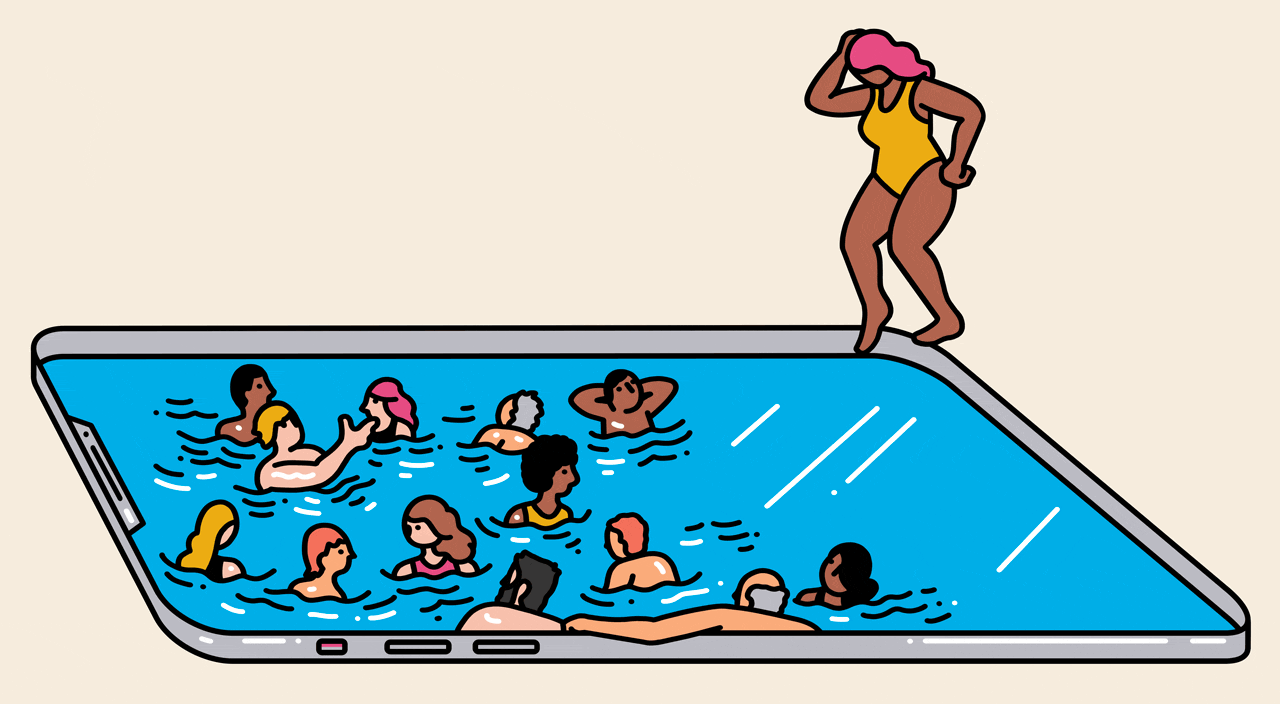As the founder of the company TechMoxie, which teaches the tech hesitant to become tech savvy, I help people learn to use social media effectively and safely. I find that my clients’ social media personas typically mirror their “real life” social personas. Take, for example, a networking event. Some are happiest in a quiet corner while others dive right in with gusto, meeting and greeting as many people as possible. Social media is no different.
My beloved Great-Aunt Betty is a notorious “over-sharer.” No story is too personal for this drugstore cashier. Her Facebook persona is quite the same. She posts with abandon, sharing all kinds of memes, article, and very random bits of information. (Thanks to Aunt Betty, I now know that May 1 is World Naked Gardening Day … and I have seen the pictures that prove it.) But unlike my Aunt Betty, many of my older clients are hesitant to join any form of social media.
The reasons vary. But, as one might imagine, I hear concerns about privacy, fake news and the belief that social media is just too superficial. I share many of their concerns about privacy and safety, but particularly during this past year of isolation due to the pandemic, the benefits of social media have been significant and the risks can be managed. So if you are among the social media hesitant, here are some reasons to jump in and tips to do so safely.
• Get to know your privacy settings.
All social media platforms allow you to adjust who gets to see what. On Instagram, for example, you can make your account entirely private so only those to whom you have granted permission can see your posts. On the other hand, if you are starting an Instagram account to promote your business, you would want your account to be viewable by the general public. Twitter offers similar options. Facebook has many privacy settings that can be easily customized. Go to Privacy in the Settings section of each social media platform. All platforms now have tutorials to help you decide how to make good decisions for your privacy. This knowledge will give you confidence.
• It isn’t all about selfies and photos of your friend’s brunch.
OK, sometimes it is. If you consider these posts too trivial, try to think of them as no different than chatting with a neighbor while in line at the deli counter. No, I really didn’t need to know that little Bobby graduated from dental school, but these quick exchanges of pleasantries at the supermarket can so brighten my day. For at least one brief moment, I am forced out of my own head and feel a bit lighter. On Facebook, seeing vacation photos or a friend’s new garden gnome helps me stay connected in small but important ways over time and distance.
• When the going gets tough …
Several years ago, my cousin gave birth very prematurely to a tiny baby girl. Worry overshadowed joy as baby Jo weighed in at a mere 1.6 lbs. To keep her family and friends up to date on Jo’s health, my cousin started a private Facebook group in which she posted frequent updates and photos. This kept family and friends informed without us peppering her with calls and emails. Her extended support team was able to post prayers for the baby when things were rocky and share joy as she grew. For me, Facebook was a source of great solace after my mom died. As my friends are scattered far and wide, there were many who would not have known of my loss if it were not for Facebook. I wrote and posted what was for me a very meaningful tribute to my mom. The outpouring of support I received in response buoyed me during this really difficult time.
• Be mindful in choosing your social media platforms.
If social connection is what you are after, focus on where your people are. The rewards are so much greater if you have a ready community. Instagram is often the app of choice for young families interested in sharing baby pictures, while Facebook tends to attract boomers on up. Twitter is a great platform for breaking news and information (no, not fake news), and you never even have to post a tweet to get a lot out of it. For those looking to start a business or grow professional connections, LinkedIn may be ideal. LinkedIn has enabled me to stay in touch with former work colleagues with whom I would otherwise have lost track.
• Nervous about posting? Explore and observe before jumping in.
Think of each platform as a foreign country with its own cultural nuances. On LinkedIn, for example, it is rare to see political posts, as it is a professional platform. For all of social media, it is considered good manners to respond to your friends posts by “liking” or commenting. (You don’t want to be that person at a dinner party who only talks about themselves.) By observing how others use the platform, you will learn what your peers are doing and you will become more comfortable.
• If you have a business, consider building it on social media.
When COVID-19 shut everything down, my daughter was finishing her senior year of college. Stuck home with her parents, she had no real job prospects. She turned her hobby of jewelry-making into an online business, with Instagram as her primary marketing outlet. She found that people were eager to support small businesses and were looking for unique items. Think of these platforms as equivalent to a brick-and-mortar store or a virtual Rolodex. A wider network will bring you greater opportunities.

Sam Island


